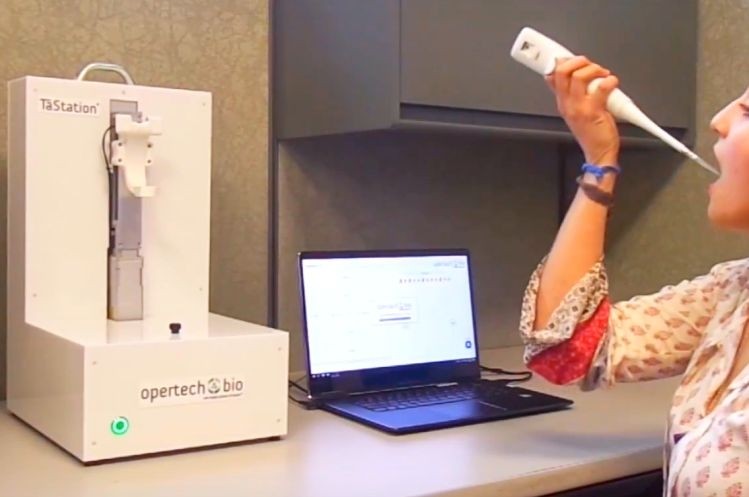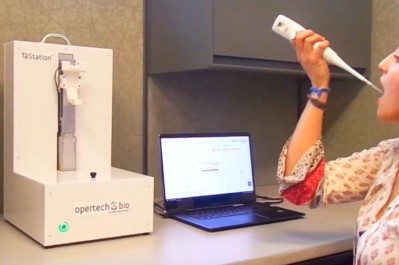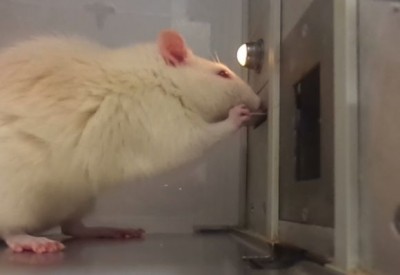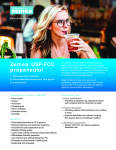The TāStation rewards testers for accurate taste testing via game-based technique
'Entirely new' approach to sensory testing is a gamechanger for taste evaluation, claims Opertech Bio

The Philadelphia-based firm – which hit the headlines a few years ago by using highly trained rats to analyze the taste quality and palatability of scores of flavor samples simultaneously, a first for the industry – has extended the approach to human subjects via its patented (Taste+Station) evaluation technology.
Claimed to be the first automated high throughput system for rapid characterization of taste sensory properties using humans, TāStation does not rely on subjective rating scales of taste sensation (as is the case with traditional methods), and can be statistically powered (ie. is considered reliable) with as few as four subjects, given the amount of data generated in each session, CEO Scott Horvitz told FoodNavigator-USA.
Ultra-small samples
An automated portable workstation that automatically presents tiny samples (subjects can evaluate up to 100 in less than an hour) to human tasters who respond to prompts on a touch-screen, the TāStation invites subjects to play games in which their success is completely dependent on their ability to detect and distinguish between taste stimuli.
But don’t human subjects get desensitized by testing so many samples so quickly?
You’d think so, said Opertech Bio chief science officer Dr Kyle Palmer, but given the sample sizes are so small (as small as 0.2ml compared with 5-20ml+ for typical taste panels) they don’t linger in the mouth and compromise the next sample.
“In a traditional test you might be swishing around 5-20mls of a sample in your mouth, saturating the receptors in their tongue and desensitizing them, whereas if you’re taking in 0.2ml it doesn’t have the same carry over effect," he explained. "But we also train testers to be alert to potential carry over effects from something very bitter like quinine, which can linger.
“So if you have a plain water sample immediately after bitter, and you record it as bitter, for example, you get penalized in the game, and after a number of trials they learn to detect the difference and we’ve consistently proven that.”
He added: “Also, we’re randomly presenting different tastes and taste modalities in the tests, so you won’t get 96 different versions of sweet in a row, and people don’t seem to get fatigued or less discerning in the way you might expect.”
All in the game?
Human taste testers using the TāStation are rewarded via a points system that incentivizes sensory acuity, says Opertech Bio: "The subjects are focused on the game and may not even be aware that their taste sensitivities and preferences are being recorded."
Reliability
As for the reliability of the data, said Dr Palmer, who previously worked at Redpoint Bio, which is best-known for its work on sweet taste enhancer Reb-C: “We have standards that represent particular tastes such as sucrose or quinine at a particular concentration [for sweetness and bitterness respectively] and we will present these from the 96-well plate in a random pattern throughout the test, so there will be multiple opportunities for the tester to taste those standard samples mixed in with the test samples.
“Every time they are presented with a standard, it must be correct, which reinforces their reliability and consistency across trials.”
Horvitz added: “Because we’re recording and validating so much data from the testers, we only require as few as four people to statistically power the analysis, whereas a traditional panel might require anything from 20-60 people for the same level of information.
"We have a pretty large pool of subjects in our database now and have been tracking their performance over time to identify those particularly sensitive to a certain taste, and then depending on a client's test objectives, we'll compose a group of testers accordingly. So they might want a mixed group of testers, or a group of highly sensitive testers, for example."
High throughput cell-based assays are a quick way to test interactions between thousands of tastants or taste modifiers and taste receptors (eg. if substance X stimulates sweet taste receptor Y, it could be sweet) and are used by firms such as Senomyx and FlavorHealth to narrow down samples of interest from vast chemical libraries.
However, such tests don’t measure palatability (does substance X taste nice?) or potency (how much sweeter is sample A than B?), and can also miss things humans can pick up; for example, substance A might be sensed by humans as sweet, but does not work by stimulating sweet receptors.
So once a shortlist of interesting samples is identified, humans are required to assess them before firms decide to dedicate more serious resources, says Opertech Bio.
Top tier food and beverage, flavor ingredient and consumer healthcare companies
Opertech Bio’s clients – “top tier food and beverage, flavor ingredient and consumer healthcare companies” - can use the TāStation in conjunction with other techniques, explained Horvitz.
So once they have used cell-based assays to identify say, 100 samples of interest from a big library, they might then use TāStation to further narrow the sample size down before homing in on a handful of compounds that warrant more detailed scrutiny. However, some clients also use TāStation as a starting point, given its speed and reliability, he said.
“In every instance, once our client has seen the data that TāStation provides in our initial project, they have come back to us requesting taste evaluation studies for additional projects. So it's being used to evaluate new sweeteners, taste enhancers and bitter blockers.
"Our approach is applicable to any kind of taste modality, but right now the Holy Grail in the food and beverage industry is finding new novel natural high intensity sweeteners that can replace sugar without off tastes.”
Palatability and preference testing
The next big thing the firm is working on moves beyond quality and focuses on 'liking' - a key aspect of any human sensory testing regime, said Dr Palmer.
"We have just submitted a patent application on this, but all I can say right now is that we have under development an objective measure of preference or 'liking' using the TāStation approach. I can't say any more yet, but we're not relying on traditional hedonic rating scales, which are very subjective."
Watch the TāStation in action:















